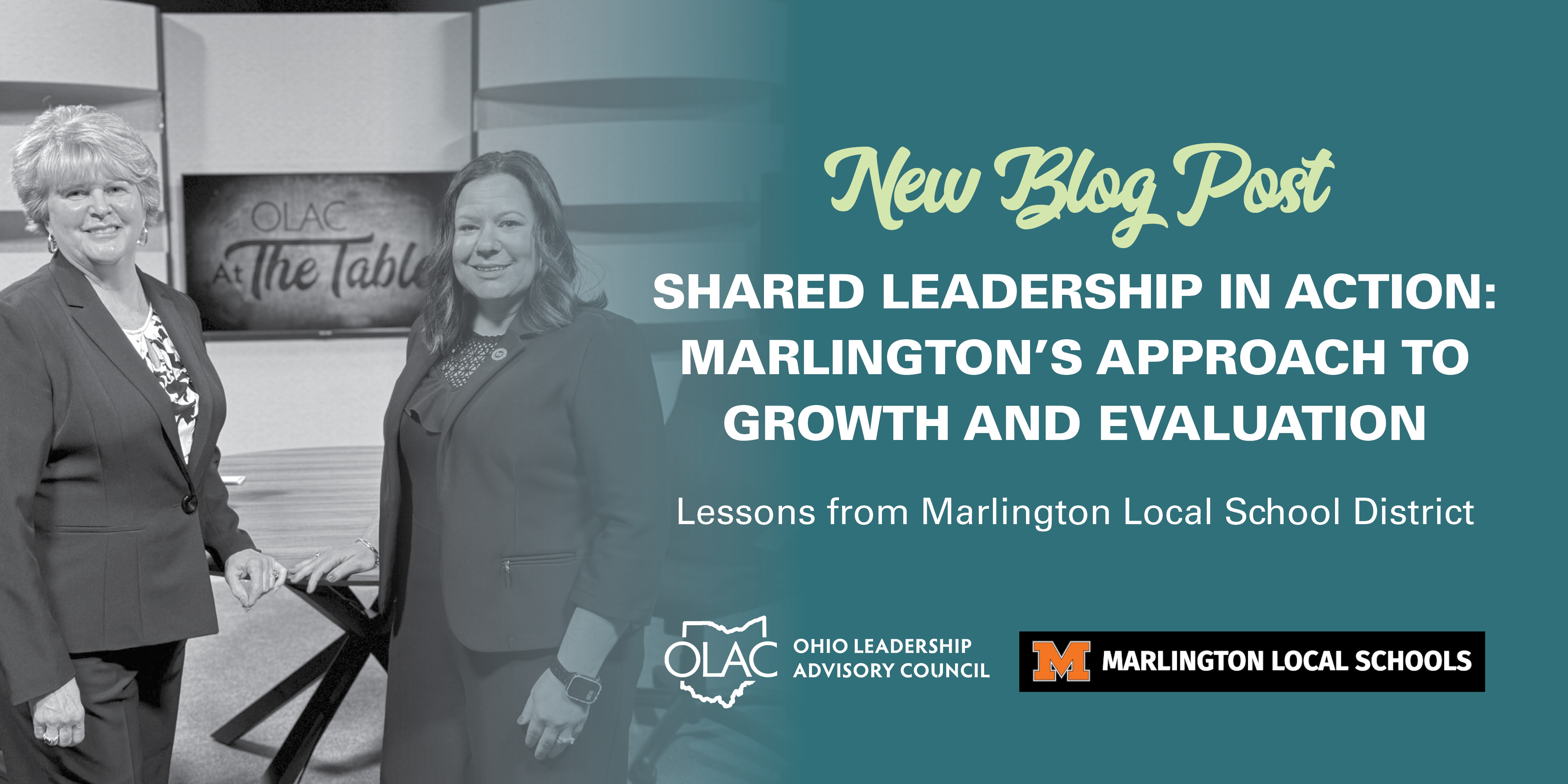Shared Leadership in Action: Marlington’s Approach to Growth and Evaluation

In Marlington Local Schools, leadership is not about top-down directives. It is about building a culture where teachers, principals, and administrators work side by side toward common goals. For Renee Kaley, Director of Curriculum and Staff Development, that commitment to shared leadership has transformed everything from career pathways to evaluation practices.
Speaking on OLAC’s At the Table podcast, Kaley reflected, “These are not Renee decisions or superintendent decisions. These are Marlington decisions, and we will make them as a district leadership team.” That philosophy—rooted in collaboration, coaching, and accountability—has become the hallmark of Marlington’s approach.
Building Pathways Together
Marlington has expanded opportunities for students through bold career tech programs. The district was the first high school to partner with the University of Mount Union to offer College Credit Plus engineering courses, giving juniors and seniors access to college credit in a newly redesigned engineering lab.
A career tech equipment grant also supported the launch of a coding pathway, funding technology upgrades and teacher training. These programs, offered through the Alliance Career Tech Partnership, extend beyond Marlington to benefit students in neighboring districts.
On the academic side, Marlington’s adoption of Benchmark Advance for K–5 English Language Arts was guided by state requirements and local insights. The shift to the Science of Reading felt seamless. As Kaley explained, “We had already started that learning process. We didn’t have to pivot or adjust because we were already on the path.”
Redefining Evaluation as Coaching
One of the most profound shifts has been the district’s embrace of OTES 2.0 as a coaching model. Earlier versions of Ohio’s evaluation system often felt punitive.
Now, evaluation is treated as a tool for growth. “We see evaluation as both a compass and a mirror,” she said. “It helps us reflect on our instructional practices while also charting the course ahead.”
This cultural shift began with intentional collaboration. District leaders engaged union representatives, principals, and teachers in open conversations about what evaluation should look like. Resident educators, for instance, can focus on their RESA year instead of undergoing a full evaluation cycle. The result is a system that balances accountability with support and positions administrators as coaches, not compliance officers.
Data-Driven, Student-Centered Decisions
Shared leadership also shapes how Marlington approaches data. Each month, the District Leadership Team reviews student data using protocols like “Notice and Wonder,” which emphasize patterns and questions over assumptions.
One exercise revealed how relationship gaps were contributing to absenteeism. Staff created a board with every student’s name and asked adults to identify which students they had strong connections with. Those without connections were paired with mentors. “We worked very diligently and purposefully to ensure those students had someone in the building,” Kaley said.
At an elementary school, data showed many students were not involved in activities inside or outside school. The school responded by creating clubs, which significantly boosted engagement. Chronic absenteeism dropped from nearly 30% to 12%.
“We’re looking at the data and using it for what’s best for kids,” Kaley emphasized.
Coaching the Coaches
Professional learning reinforces Marlington’s shared leadership model. Administrators participate in OLi⁴ training and calibration walkthroughs to align expectations. Leaders also review teacher feedback together, ensuring consistency across schools.
Kaley sees this as essential: “We want to make sure that we are providing every resource possible, every learning opportunity possible, for our teachers to be successful. That holds all of us accountable.”
Teachers benefit from multiple layers of coaching—from co-planning with instructional coaches, to observing peers, to receiving targeted professional development based on data trends.
Lessons for Ohio Leaders
Marlington’s story shows how shared leadership can transform evaluation, data, and professional development into drivers of growth. By centering collaboration, transparency, and coaching, the district is improving instruction, strengthening relationships, and boosting student outcomes.
As Kaley put it: “We’re accountable to our students, to our parents, and to each other. That shared accountability is what moves us forward.”
Learn more in Episode 20: Decisions Made Together: The Power of Shared Leadership in Schools on At the Table.